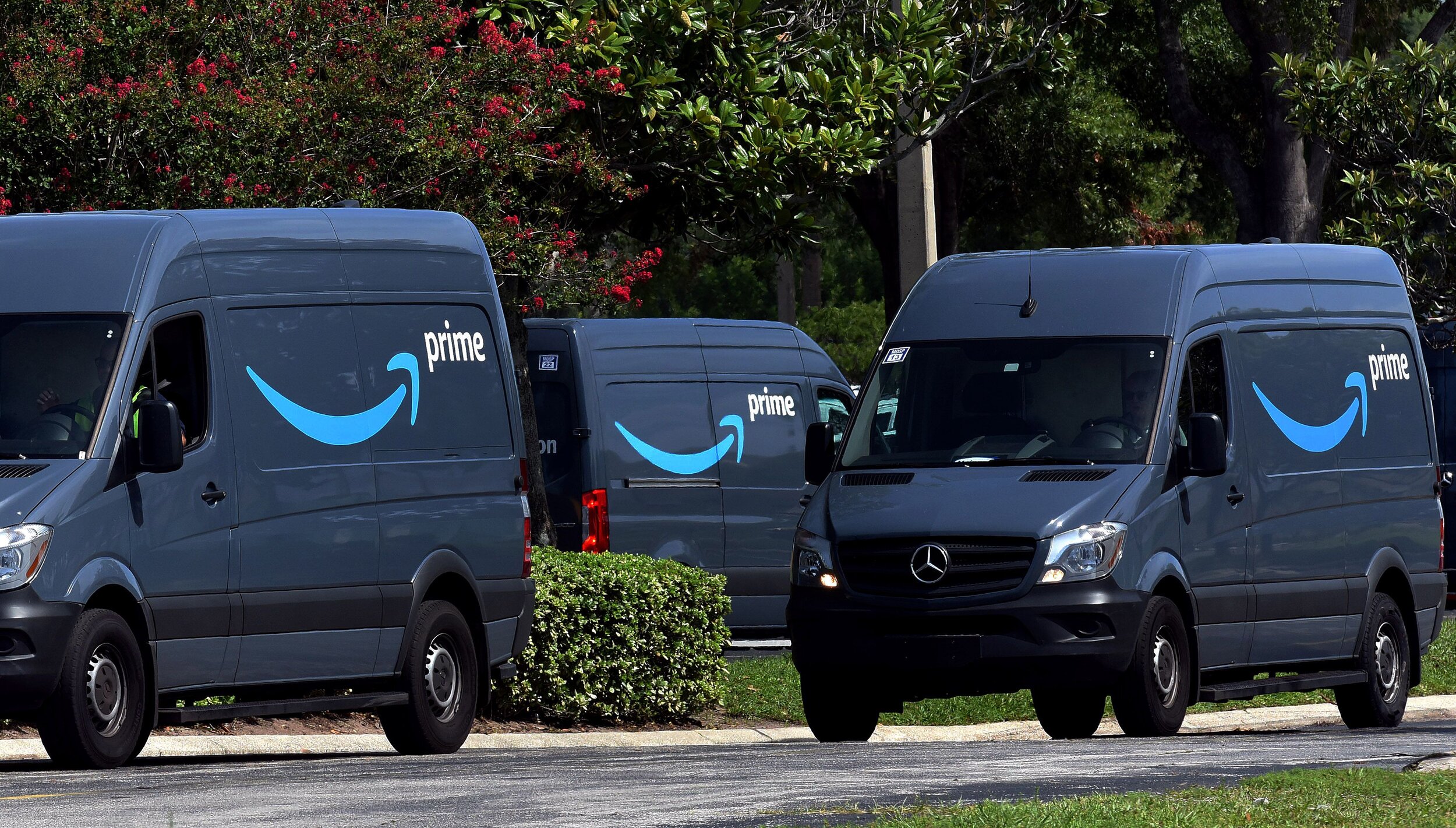QUICK COMMERCE – THE NEXT GENERATION OF E-COMMERCE
©Nurphoto (Getty Images)
As the internet economy grows, so does the importance of last-mile delivery, which is the final step in the increasingly competitive and costly process of moving items to customers’ homes as quickly as possible. Quick commerce (“q-commerce”) offers significant growth potential expecting to reach a global market size of around Euro 448 billion by 2030.
Traditional e-commerce reinvented the retail and delivery landscape through online ordering, but even today’s delivery times average between 3-5 business days. The next-generation of e-commerce, which as the name suggests is all about speed. Q-commerce brings small quantities of goods to customers almost instantly. Companies like Delivery Hero, Amazon or Carrefour, started to deliver household goods to customers’ doors in less than 30 minutes. However, rather than replacing a weekly food shop, q-commerce is looking to integrate these facilities into their supply chain and complementing their warehouse network, to deliver a particular set of items, conveniently and fast.
Speed and convenience is becoming more important than ever before. But quick commerce has also proved to be a valuable ally when it comes to providing instant support to communities in need, especially amidst the COVID-19 pandemic teams around the world have responded to rising demand for delivery as people are encouraged to stay home. Bound with the convenience of speed and effortless ordering, this is likely to affect customer behavior in the long term.
I have spoken about Zalando’s and Unibail-Rodamco-Westfiled’s partnership in one of my previous posts allowing participating brands to reach new customers via Europe’s largest online fashion platform and to improve stock turnover (Read more: Click here). Zalando’s Connected Retail platform connects stationary retailers with the Zalando marketplace digitizing stock from local stores and connecting their warehouse to the Zalando platform to increasing product availability as well as faster delivery.
Delivery Hero CEO and Co-founder, Niklas Östberg, said: “We have now entered the era of quick commerce. This category offers tremendous opportunity that has gone largely untapped.” With years of logistic and technology expertise, Delivery Hero is in a prime position to drive the q-commerce category forward. The company already operates over 100 Dmarts (delivery-only local warehouses, or cloud stores), as their infrastructure offers the most effective way of sorting and delivering goods, and plan to have over 400 by the end of 2020. At the same time, Delivery Hero partners with over 15,000 local businesses such as mom and pop stores, cafes, supermarkets, pharmacies and flower shops to offer the best product choice within the customers’ proximity. This geographical advantage allows us to reach more customers faster, with less friction, and deliver goods from their favourite local stores. With a vast choice of products, delivery is available 24/7.
Carrefour has teamed up with Spanish start-up Glovo to provide a fast home delivery service as the French supermarket group looks to deal with growing competition from the likes of Amazon as well as domestic rivals. Carrefour’s French rival Casino already has a partnership with Amazon, while Marks & Spencer has a joint venture with online food retail pioneer Ocado.
Carrefour’s Glovo partnership will cover four countries – France, Spain, Italy and Argentina – and will start operating by early October at the latest. The service will aim to deliver 2,500 products to customers’ homes within 30 minutes. Carrefour, Europe’s largest retailer, is in the midst of a five-year plan to boost sales and profits. The plan includes 2.8 billion euros of investment in digital commerce and aims to increase online food sales to 5 billion euros by 2022.
After the launch of Amazon Prime Now, the ultra-fast grocery delivery, the e-commerce giant is preparing to launch an ultra-fast grocery delivery service in the United Kingdom. Amazon’s new service is aimed at bringing rapid grocery delivery to almost 40% of UK households by the end of the year. The project could involve making Amazon Fresh, Amazon’s grocery delivery service, a free benefit of UK-based Prime members instead of charging a monthly add-on fee or per-order charge. The move comes as UK’s dominant online grocer, Ocado has been struggling to open additional grocery delivery slots for consumers due to unprecedented demand caused by COVID-19 related lockdowns.
Increasing online orders, also trigger an increase in demand of small package distribution hubs closer to where people live to provide faster deliveries. In Germany, Amazon’s fulfillment network currently consists of nine fulfillment centers at eight locations across the country comprising a total amount of ground space of more than 860,000 square meters. Now, the company has begun construction of a new distribution centre in Emden in Lower Saxony. It close proximity to the high-way and surround residential areas makes it an ideal addition to Amazon’s last-mile network. In turn, it shall also help to better coordinate the delivery of items, so that increasing delivery traffic, noise and pollution will not burden residents.
The infrastructure of today’s city were not build for more home deliveries. In the future, cities could impose costs and restrictions on deliveries, like congestion fees or requiring clustered deliveries instead of allowing trucks to drive into the same housing development multiple times a day. We need to completely rethink how we use our infrastructure, in order to reduce the strain on the roadways and delivery systems. While the rise of ride-hailing services like Uber has unquestionably caused more traffic, the increase in delivery trucks has worsened the problem, in metropolitan areas like New York City. As a result, cars in the busiest parts of Manhattan now move just above a jogger’s pace, about 7 miles/hour, which is roughly 23 percent slower than at the beginning of the decade.
While it is convenient for the customer, q-commerce also causes increased costs and headaches for the Amazons of our world, and it is not great for the environment either. Companies are leveraging real-time inventory management, data insights and technology-driven pricing to optimize the customer experience as well as increase operating efficiencies.
